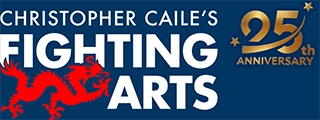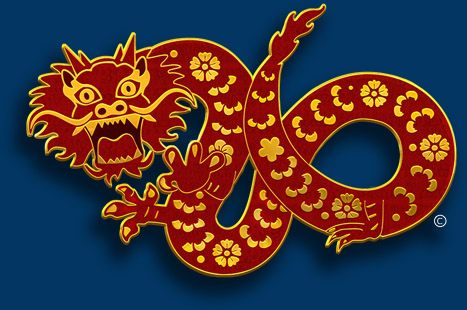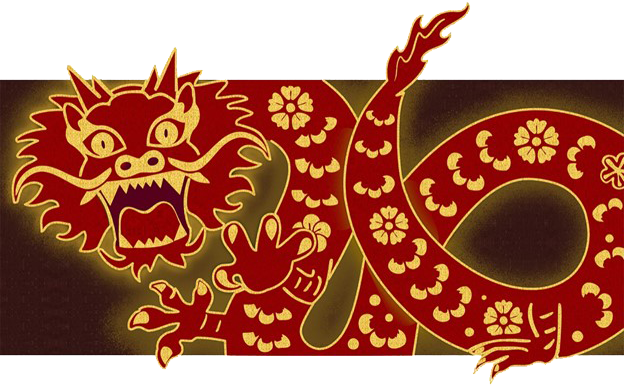Seiza: The Kneeling Posture
By Christopher Caile
Seiza. It is the basic kneeling position used at the beginning and the end of martial arts classes and is associated with bowing in respect for teachers and other students.
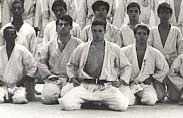 |
Christopher Caile sitting at head of a karate class (Kyokushinkai) in 1967 at the Brooklyn Academy of Music, the school headed by Kaicho (then Shihan) Tadashi Nakamura who would later found World Seido Karate. |
In this posture the knees are bent 180 degrees with the calves tucked under the thighs so you sit on your heels, toes pointed.
Few today, however, give it more than a momentary thought, other than the pain so often felt in the ankles and legs, or the growing discomfort felt when sitting this way for long. And when westerners sit this way for very long often their legs go to sleep.
So why do we sit this way and what is its value? After all, in the west most people sit in chairs or lounge across their sofas. There is no history or lifelong adherence to a method of kneeling on the floor. Is seiza anything more than a quaint Asian cultural artifact?
In Japan this method of sitting has always been associated with proper etiquette. In modern karate-do, aikido, kung fu and in many other arts, the role of proper etiquette is a vehicle to show respect, develop discipline and train the mind and body. By being respectful you show appreciation for your art, your study, the teacher and other students. It becomes a triumph of spirit over ego, an acknowledgment of the importance of others and the group over the self. In this form etiquette represents willful discipline of the mind and development of spirit.
Seiza and proper etiquette, however, did not always serve this same purpose. Many elements of etiquette that developed during feudal periods of armed warfare (roughly the 12th through the 17th centuries) — such as where to hold your hands, how to bow, walk, move, or sit, where to sit and the distance expected from others — all at their core were intimately linked to the practice of sword and other weapon arts, as well as to strategies of self-defense and the ability to react instantaneously.
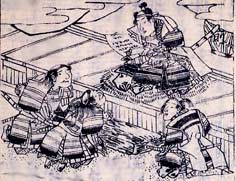 Warriors were almost always armed and even when they slept a weapon was always close by. At any time warriors had to be ready for immediate reaction and mobility — when outside, in town, when visiting others, in the presence of their superiors or lord, when eating and drinking with friends, when escorting others or on campaign or in battle. Necessity dictated constant awareness of everything around them, the position of others, their environment and always their ability to react or defend themselves.
Warriors were almost always armed and even when they slept a weapon was always close by. At any time warriors had to be ready for immediate reaction and mobility — when outside, in town, when visiting others, in the presence of their superiors or lord, when eating and drinking with friends, when escorting others or on campaign or in battle. Necessity dictated constant awareness of everything around them, the position of others, their environment and always their ability to react or defend themselves.
Some samurai took this to the extreme. One story says that legendary Miyamoto Musashi (1600 era), the Japanese masterless samurai famed for his many successful challenges of others, was so fearful of being exposed (without his sword) that he refused to ever take a traditional bath.
In this warrior context, if seiza was incorrectly executed, or the kneeling person was lax in his positioning, it could have fateful consequences. Inside a dwelling a razor sharp short sword (often a short knife was also present) was often positioned at their left side just inches from their hand. When outdoors, a longer sword was added, also positioned at their left side (through a sash) or slung across their back.
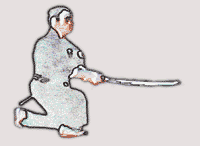
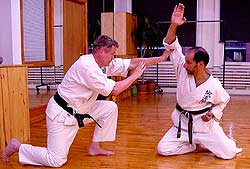 Likewise, from sieza position many warriors learned empty hand defenses against a sword strike or other attack. A defender could pivot to the side instantaneously to avoid and control a weapon thrust (careful that the knees were not too widely spaced to maintain balance while pivoting) or move forward into a downward weapons strike in order to intercept the striking arm before the attack was fully generated or control a weapon strike coming downward at an angle from the side. Today many empty hand self-defenses are still practiced in diato ryu, aikido, many forms of jujutsu as well in some other arts.
Likewise, from sieza position many warriors learned empty hand defenses against a sword strike or other attack. A defender could pivot to the side instantaneously to avoid and control a weapon thrust (careful that the knees were not too widely spaced to maintain balance while pivoting) or move forward into a downward weapons strike in order to intercept the striking arm before the attack was fully generated or control a weapon strike coming downward at an angle from the side. Today many empty hand self-defenses are still practiced in diato ryu, aikido, many forms of jujutsu as well in some other arts.
But these skills no longer receive the same emphasis in many modern "do" arts, such as karate-do, judo and others. As a result some of the subtleties of proper kneeling and moving have been lost. In other cases just the outer form of etiquette has been maintained, while the original intent, rationale and meaning have been lost to the new ends of "do" oriented arts.
This evolution in itself should not necessarily be considered unfortunate, or those who practice the new seiza etiquette should not be considered as "doing it wrong." Westerners aren't used to sitting in seiza, and the art there practice has a different emphasis.
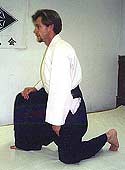
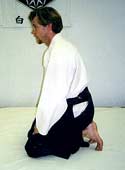
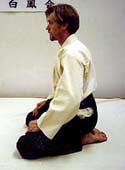
The principles of traditional seiza are simple. Upon sitting, the left leg is bent and moved behind, the toes of the left foot maintaining contact with the floor as the shin in lowered, the right leg being forward and bent. As your buttocks sink the right leg is likewise pulled back — both feet now being supported by the toes. Only then are the toes allowed to move backward so the instep lies flat, the feet pointed in an a angle (they can be kept apart or the big toe of each foot can touch). The hands are then positioned across the thighs.
The toe position is critical. If the leg and instep are placed flat with the toes pointed, mobility and balance are lost if you try to move forward to one leg, or otherwise move. For a warrior, such a technique would be dangerous since stability would be sacrificed, and a foe observing such behavior would be alerted to an interval of advantage.
To stand from seiza the right leg moves first. But first as the buttocks begin to rise the toes of both feet pull back with the tips of the toes on the ground,
Thus as the right leg moves forward, the toes of the opposite foot support a quick, balanced, powerful forward motion — the movement of the body forward, supported with the right leg providing momentum and mobility behind any sword cut, parry, empty hand defense or transition to standing (in empty hand self-defense situations, however, sometimes the left leg comes up first).
Try this experiment. Sit in seiza with your toes pointed. Try to move quickly and powerfully forward or quickly rise. Now try the same with the toes turned to the floor. You should feel a dramatic difference.
An alternative exercise is to start to sit, just by collapsing your legs, or by moving one leg back but with the toes pointed. See how you can react to an attack from the front, or a push backwards. Check the stability in this position against that evidenced during traditional kneeling.
It is true that in judo, karate-do, taekwondo and many other arts there is no longer an active link to the sword arts or necessity to practice self-defense from seiza. But the practice of traditional seiza does force a heightened state of mental readiness, and awareness, and attention to position and balance. It also maintains a combative link to self-defense scenarios of our warrior heritage and by doing so creates an atmosphere of seriousness around practice that can be easily forgotten — an integration of attitude with technique.
Acknowledgement: FightingArts.com would like to thank Sensei Robin Brown of New York City's Hakuho Kai Daito Ryu Aikijujtsu for demonstrating the proper fundamentals of sitting in Seiza.

About the Author Christopher Caile
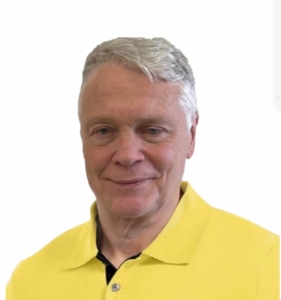
Screenshot
Christopher Caile is the Founder and Editor-In-Chief of FightingArts.com. He has been a student of the martial arts for over 65 years.
He first started in judo while in college. Then he added karate as a student of Phil Koeppel in 1959 studying Kempo and Wado-Ryu karate. He later added Shotokan Karate where he was promoted to brown belt and taught beginner classes. In 1960 while living in Finland, Caile introduced karate to that country and placed fourth in that nation's first national judo tournament.
Wanting to further his karate studies, Caile then hitch hiked from Finland to Japan traveling through Scandinavia, Europe, North Africa, the Middle East and South and Southeast Asia — living on 25 cents a day and often sleeping outside.
Arriving in Japan (1962), Caile was introduced to Mas Oyama and his fledgling full contact Kyokushinkai Karate by Donn Draeger, the famous martial artist and historian. Donn also housed him with several other senior international judo practitioners. Donn became Caile's martial arts mentor, coaching him in judo and introducing him to Shinto Muso-ryu under Takaji Shimizu.
Caile studied at Oyama's honbu dojo and also at Kenji Kurosaki's second Tokyo Kyokushinkai dojo. In his first day in class Oyama asked Caile to teach English to his chief instructor, Tadashi Nakamura. They have been friends ever since. Caile also participated in Oyama's masterwork book, "This Is Karate."
Caile left Japan with his black belt and designation as Branch Chief, the first in the US to have had extensive training in Japan directly under Oyama Sensei. As such, Oyama Sensei asked him to be his representative on visits to his US dojos to report on their status.
A little over a year later, Nakamura, Kusosaki and Akio Fujihira won an epic David vs. Goliath challenge match against Thailand's professional Muay Thai Boxers in Bangkok, Thailand, thrusting Kyolushinkai and Nakamura into national prominence.
Back in the US Caile taught Kyokushinkai karate in Peoria, Il while in college and later in Washington, DC. while in graduate school. Durimg this time Shihan Nakamura had moved to New York City to head Kyokushinkai's North American Operation.
In 1976 when Kaicho Tadashi Nakamura formed the World Seido Karate organization, Caile followed. Living then in Buffalo, NY, Caile taught Seido karate and self-defense at the State University of New York at Buffalo (SUNY Buffalo) for over 15 years where he also frequently lectured on martial arts and Zen in courses on Japanese culture.
Caile moved to New York City in 1999 to marry Jackie Veit. He is now an 8th degree black belt, Hanshi, training in Seido Karate's Westchester, NY Johshin Honzan (Spiritual Center) dojo. In Seido Caile is known for his teaching of and seminars on kata applications. He also produced a 14 segment video series on Pinan kata Bunkai currently available to Seido members.
Caile is also a long-time student and Shihan in Aikido. He studied in Buffalo, under Mike Hawley Shihan, and then under Wadokai Aikido's founder, the late Roy Suenaka (uchi deshi under Morihei Ueshiba, founder of Aikido and was Shihan under Tohei Sensei). In karate, Suenaka (8thdan) was also an in-house student of the Okinawan karate master Hohan Soken.
Having moved to New York City, Caile in 2000 founded this martial arts educational website, FightingArts.com. Twenty-five years later, in 2025, it underwent a major update and revision.
For FightingArts.com and other publications Caile wrote hundreds of articles on karate, martial arts, Japanese art, Chinese Medicine and edited a book on Zen. He also developed relationships with a cross section of leading martial arts teachers. Over the last four decades he has conducted extensive private research into karate and martial arts including private translations of the once secret Okinawan hand copied and passed on Kung Fu book, the Bubishi, as well as an early karate book by the karate master Kenwa Mabuni. He periodically returns to Japan and Okinawa to continue his studies and participate Seido karate events. In Tokyo he practiced (with Roy Suenaka Sensei) in a variety of aikido organizations with their founders – including private interviews and practices at the Aiki-kai Aikido Honbu dojo with the son and grandson of aikido's founder, Doshu (headmaster) Kisshomaru (an old uchi-deshi friend) and his son, Moriteru Ueshiba and in Iwama with Morihiro Saito. On Okinawa he studied Goju Ryu karate under Eiichi Miyazato, 10th dan founder of Naha's Jundokan, and also with Yoshitaka Taira (who later formed his own organization, who specialized in kata Bunkai. While there Caile also trained with Hohan Soken's senior student, Master Fusei Kise, 10 dan as well as with the grandson of the legendary karate master Anko Itosu.
Caile's other martial arts experience includes: Diato-ryu Aikijujitsu and Kenjitsu, kobudo, boxing, Muay Thai, MMA, Kali (empty hand, knife and bolo), study of old Okinawan Shoran-ryu & Tomari body mechanics, study of old Okinawan kata under Richard Kim, study of close quarter defense and combat, including knife and gun defenses, Kyusho Jitsu and several Chinese fighting arts including 8 Star Praying Mantis, Pak Mei (White Eyebrow), and a private family system of Kung Fu.
Caile is also a student of Zen as well as a long-term student of one branch of Traditional Chinese Medicine, Chi Kung (Qigong). As one of two senior disciples of Chi Kung master Dr. Shen (M.D., Ph.D.) Caile was certified to teach and practice. This led to Caile's founding of the The Chi Kung Healing Institute on Grand Island, NY. In Western NY, he also frequently held Chi Kung seminars, including at SUNY Buffalo and at the famous Chautauqua Institution in Chautauqua, NY. His articles on Chi Kung also appeared in the Holistic Health Journal and in several books on alternative medicine.
Caile holds a BA in International Studies from Bradley University and MA in International Relations with a specialty in South and Southeast Asia from American University in Washington, D.C. While in Buffalo, NY he also studied digital and analog electronics.
In his professional life Caile also worked in public relations and as a newspaper reporter and photographer. Earlier he worked in the field of telecommunications including Managing a Buffalo, NY sales and service branch for ITT. He then founded his own private telephone company. This was followed by creation of an electrical engineering company that designed and patented his concept for a new type of low-cost small business telephone system (which was eventually sold to Bell South). The company also did contract work for Kodak and the US space program. Simultaneously Caile designed and manufactured a unique break-apart portable pontoon boat.
Most recently Caile co-founded an internet software company. Its products include software suites with AI capability for control and management of streaming media, such as video and music, an all-in-one book publishing software product for hardcover, eBook and audio book creation and security software for buildings and government use.
For more details about Christopher Caile's martial arts, work experience and life profile, see the About section in the footer of this site.
Search for more articles by this author:
